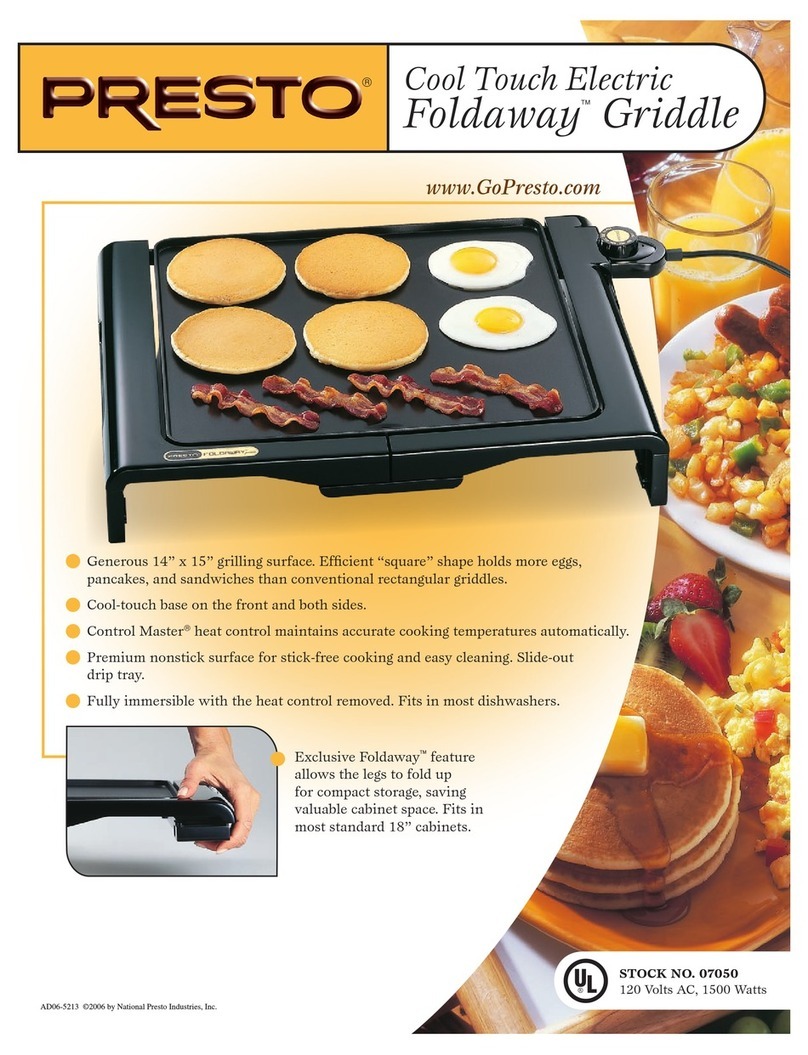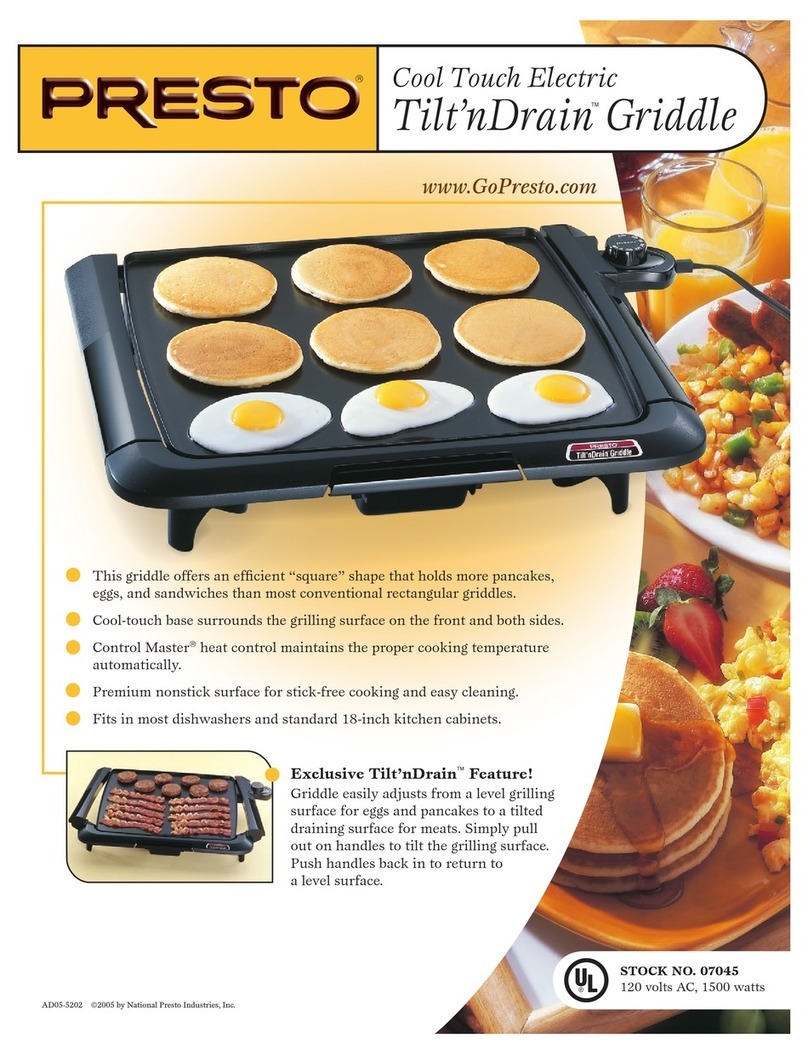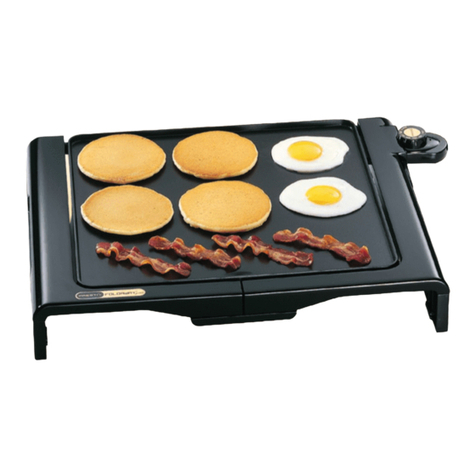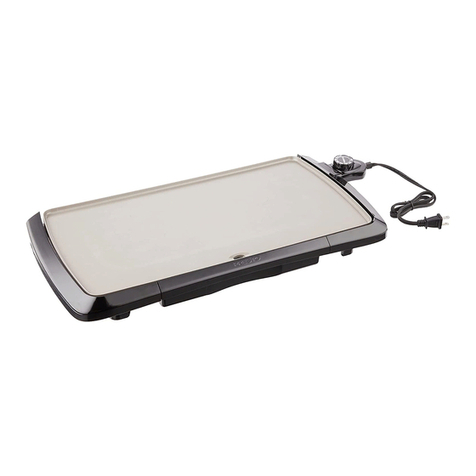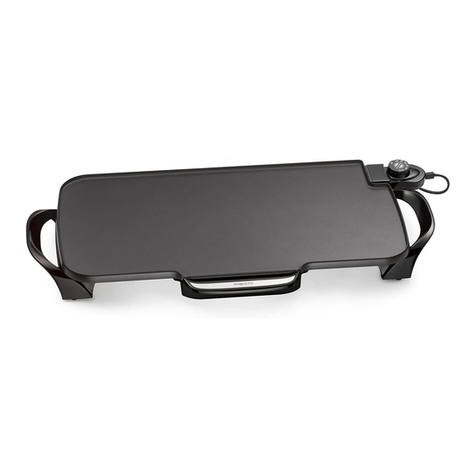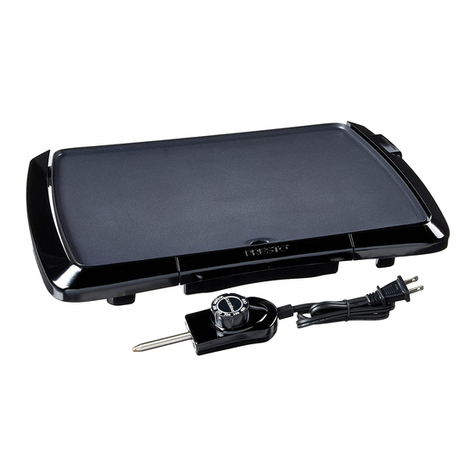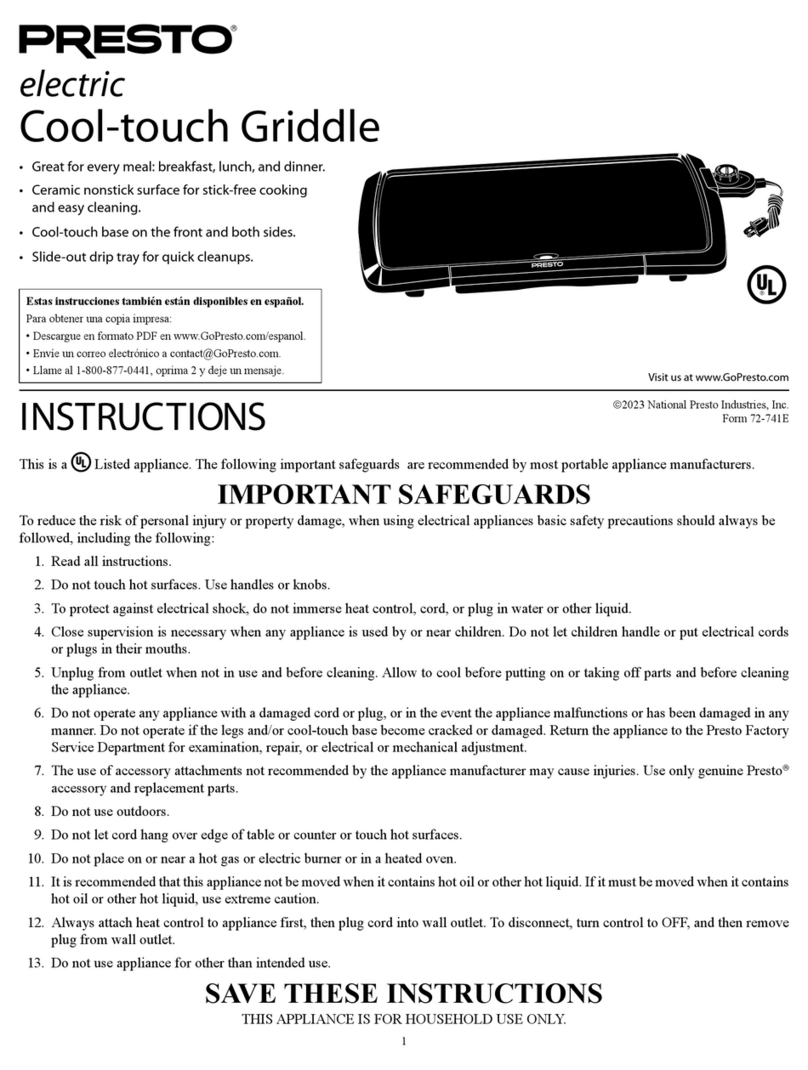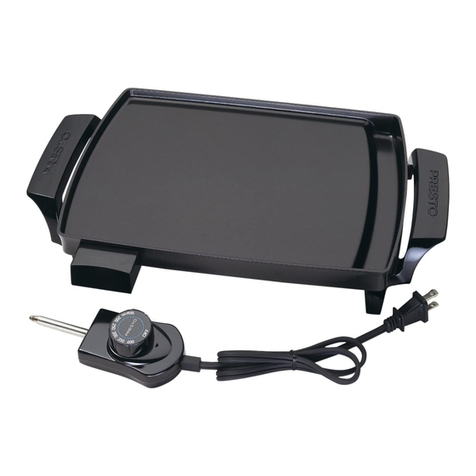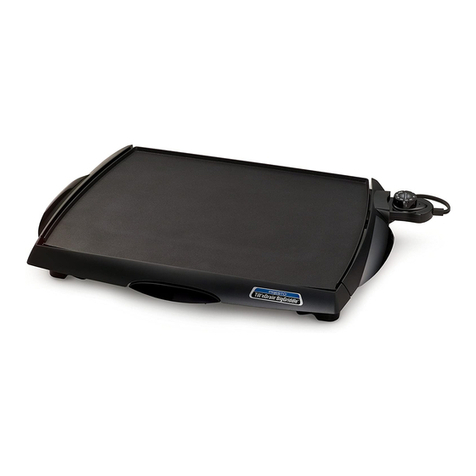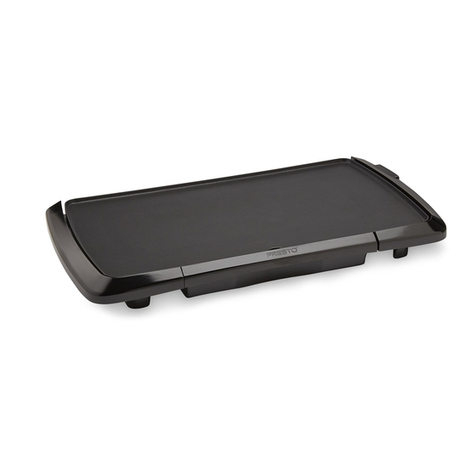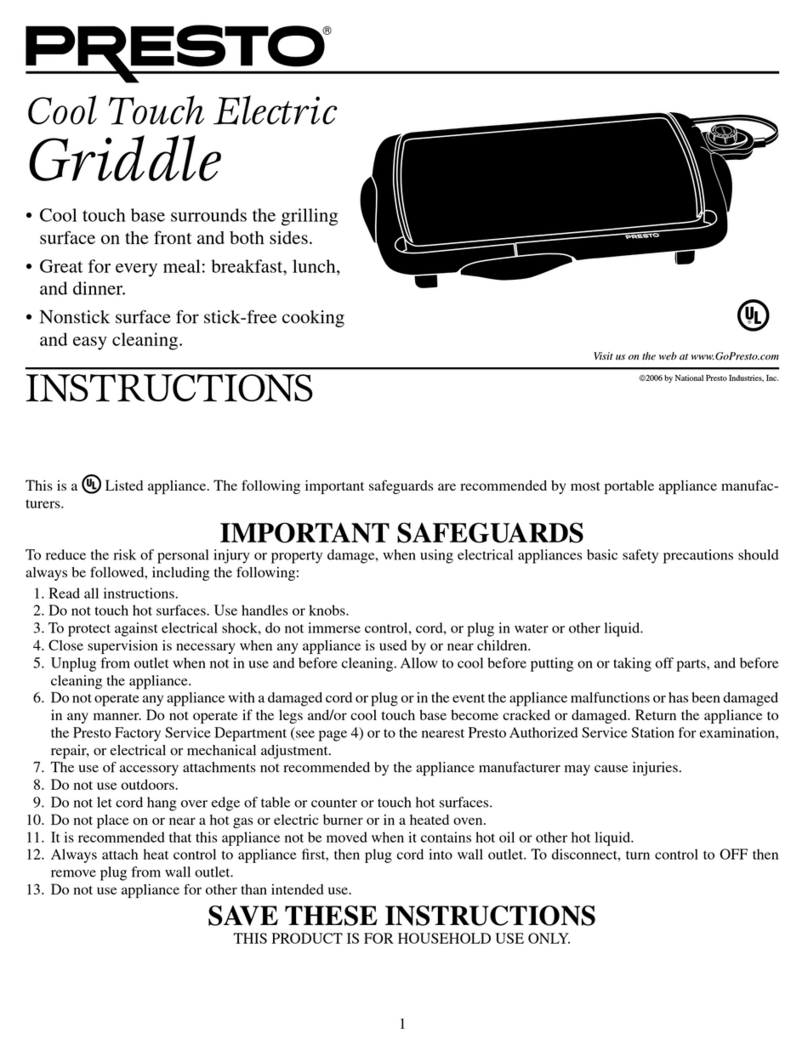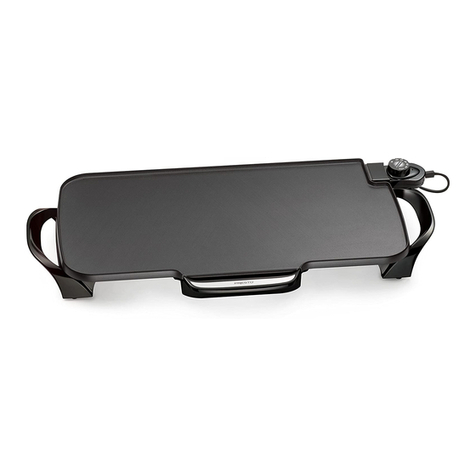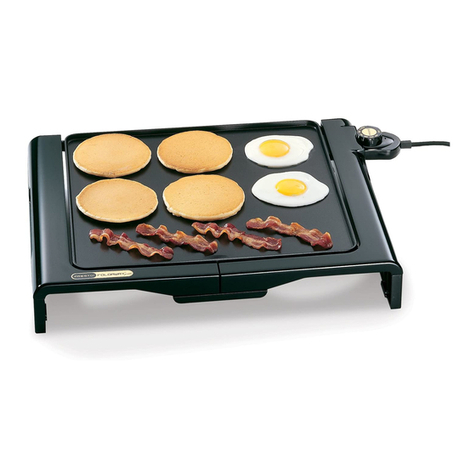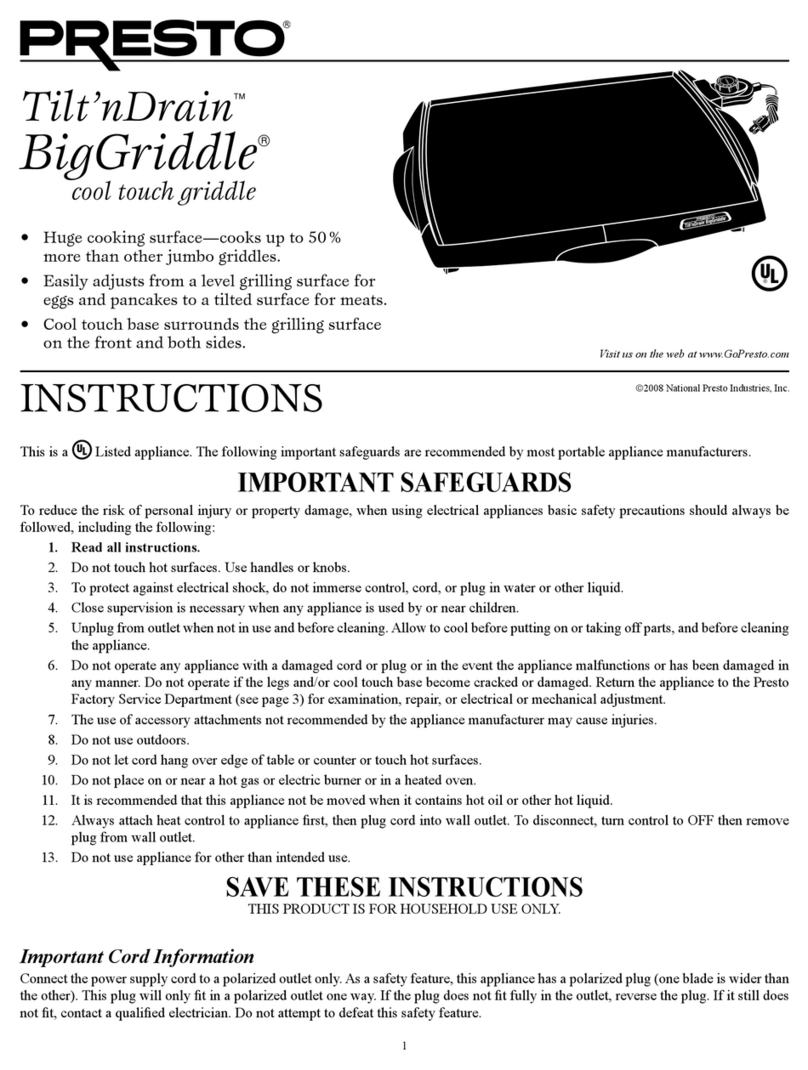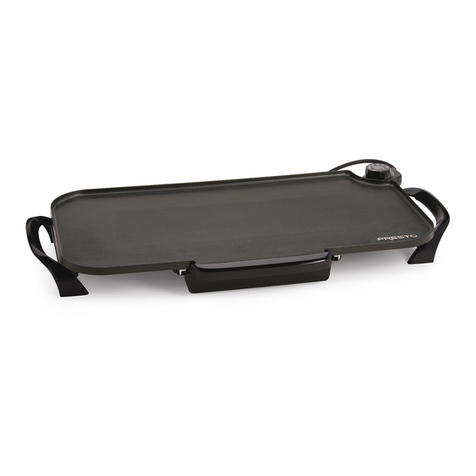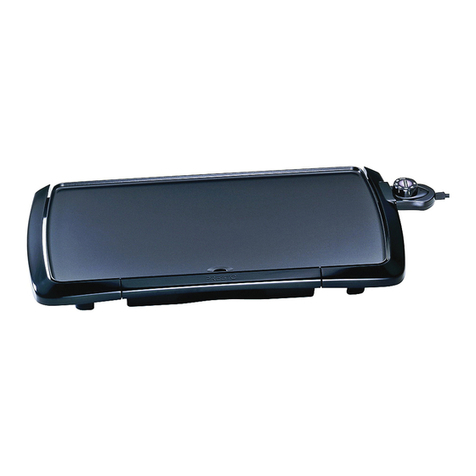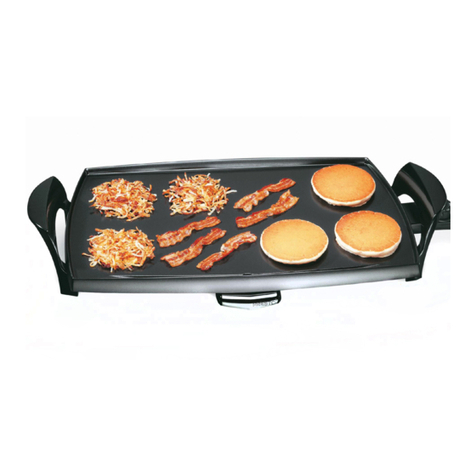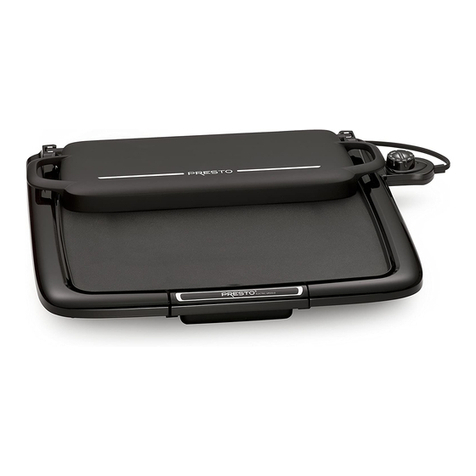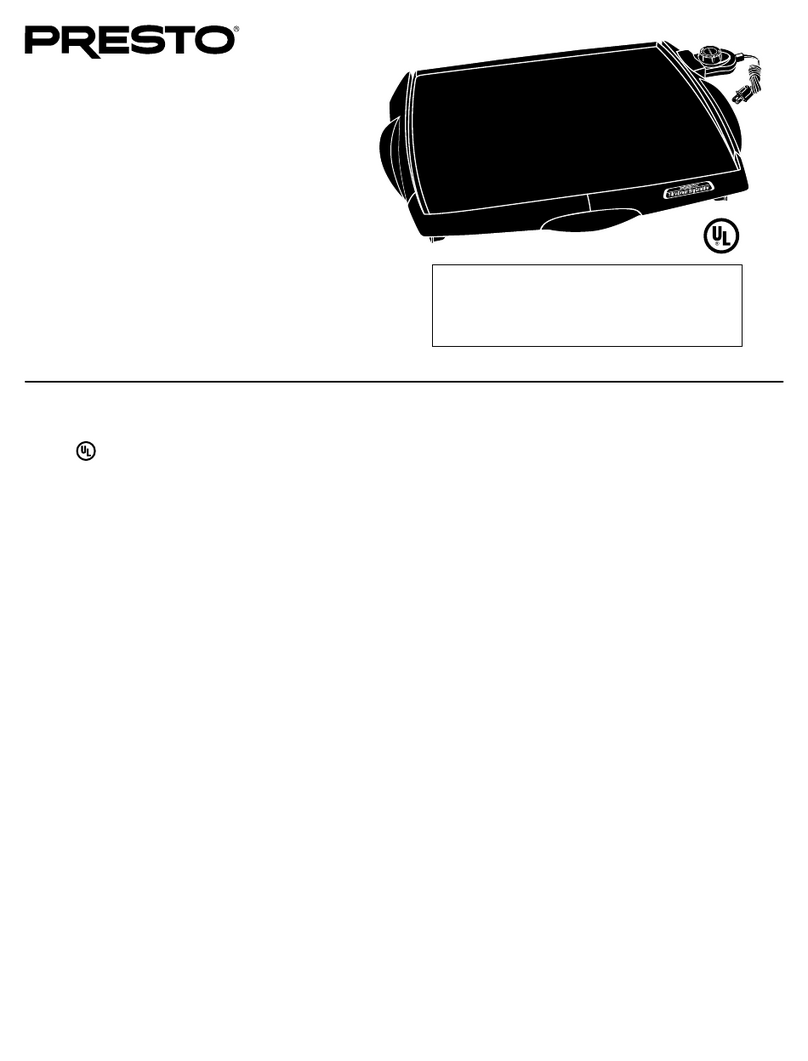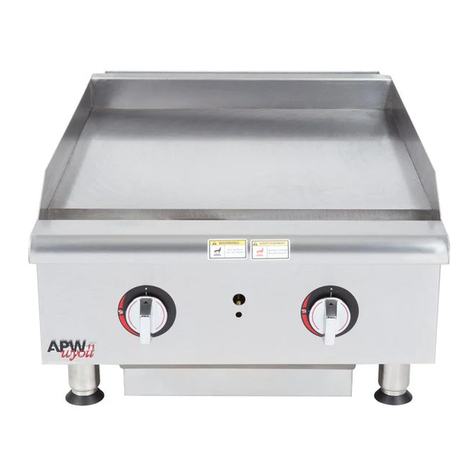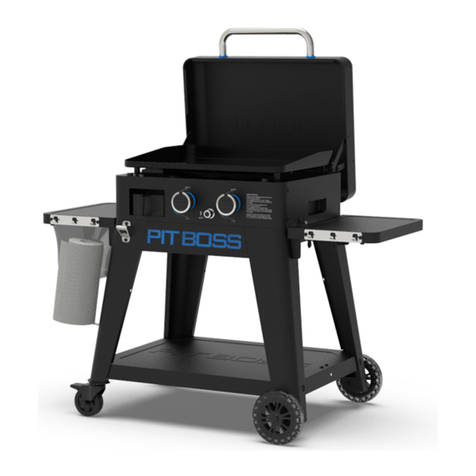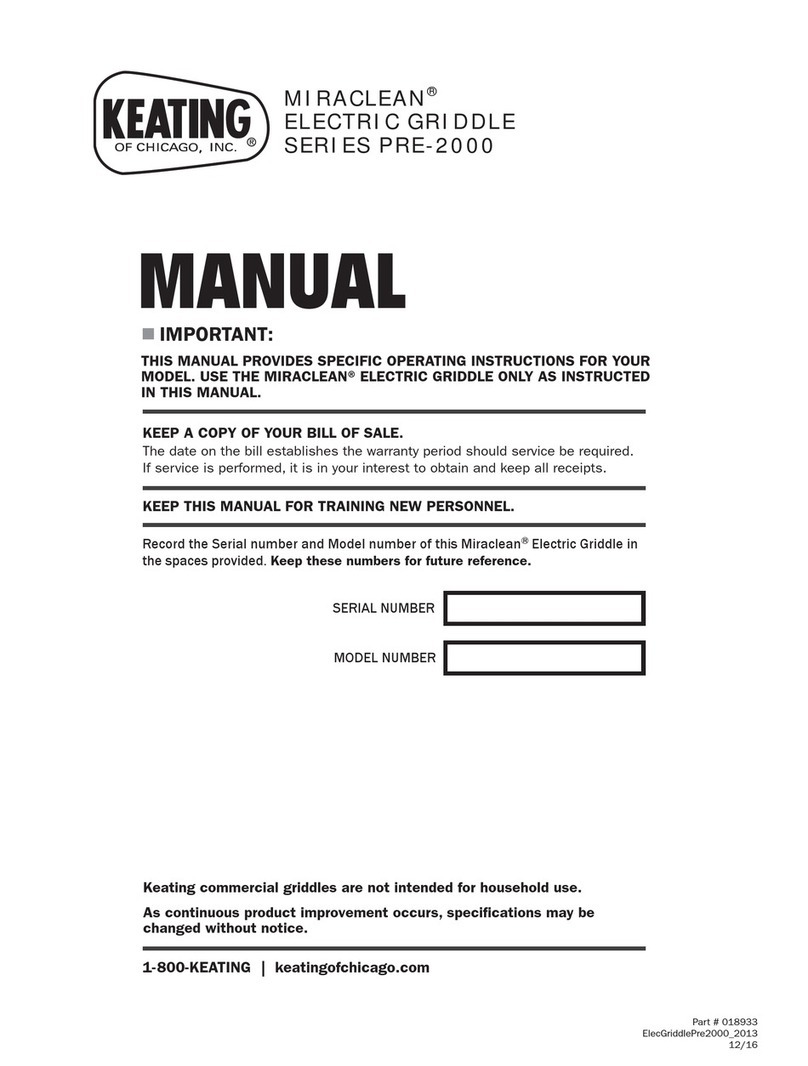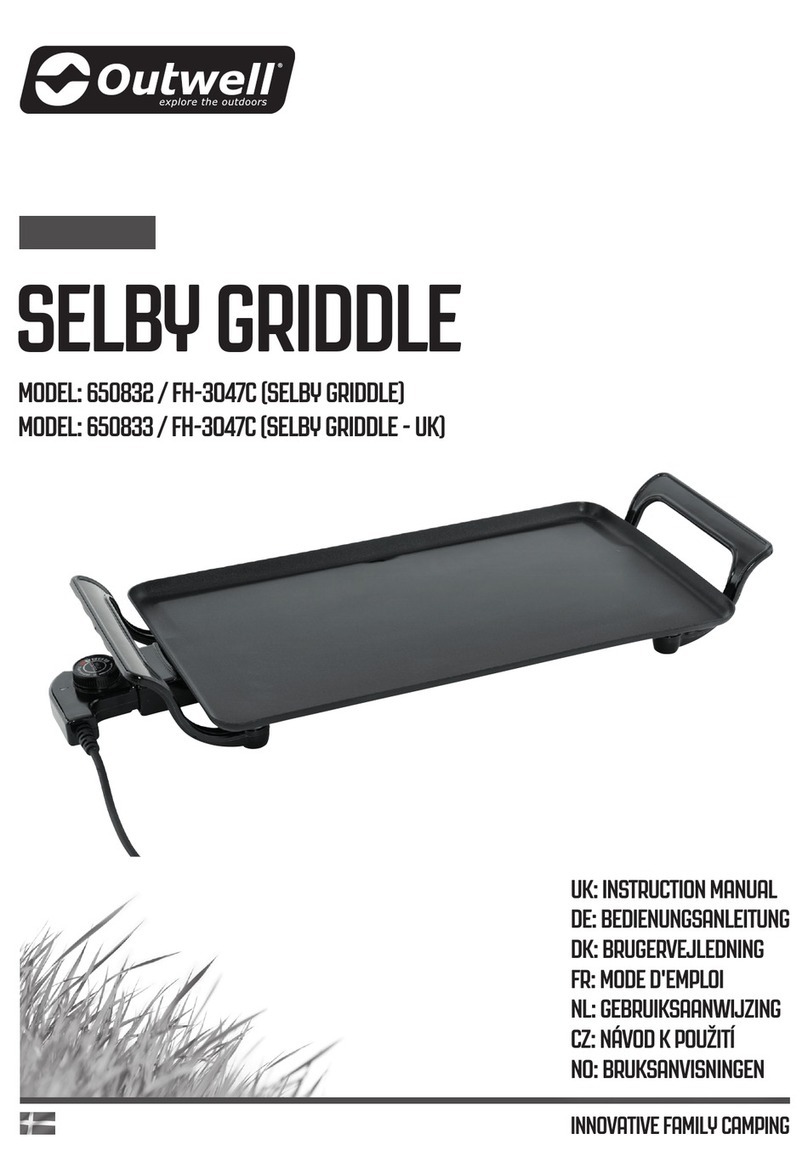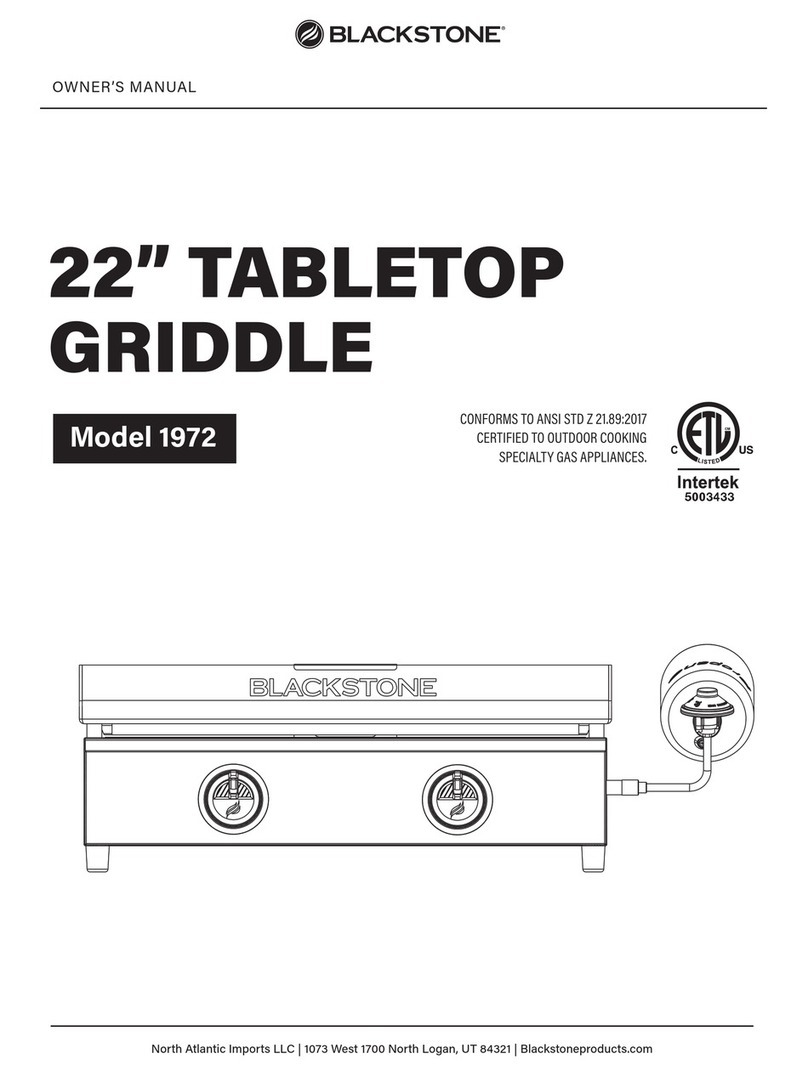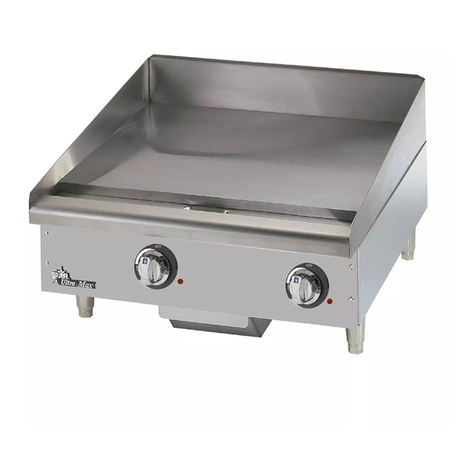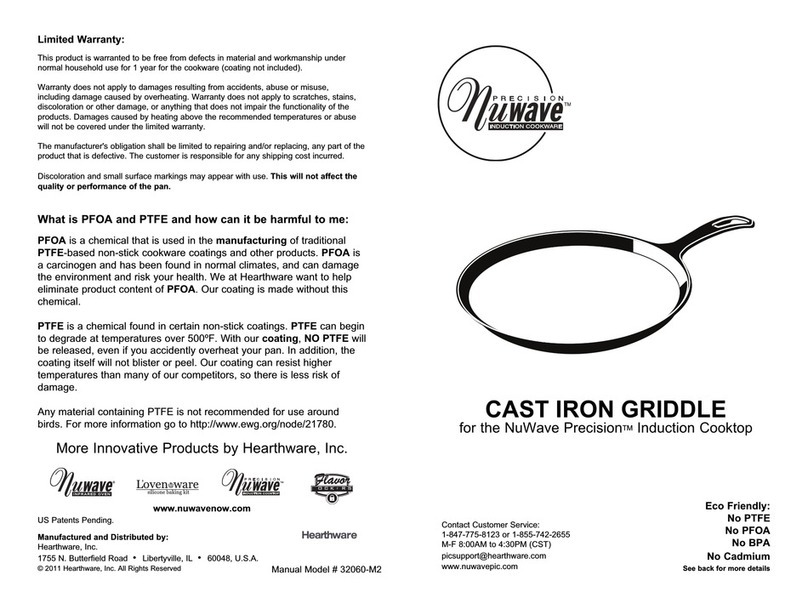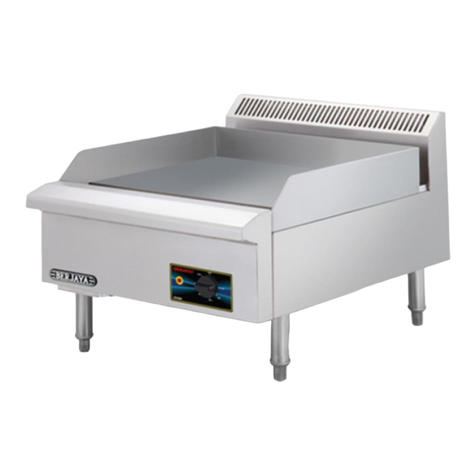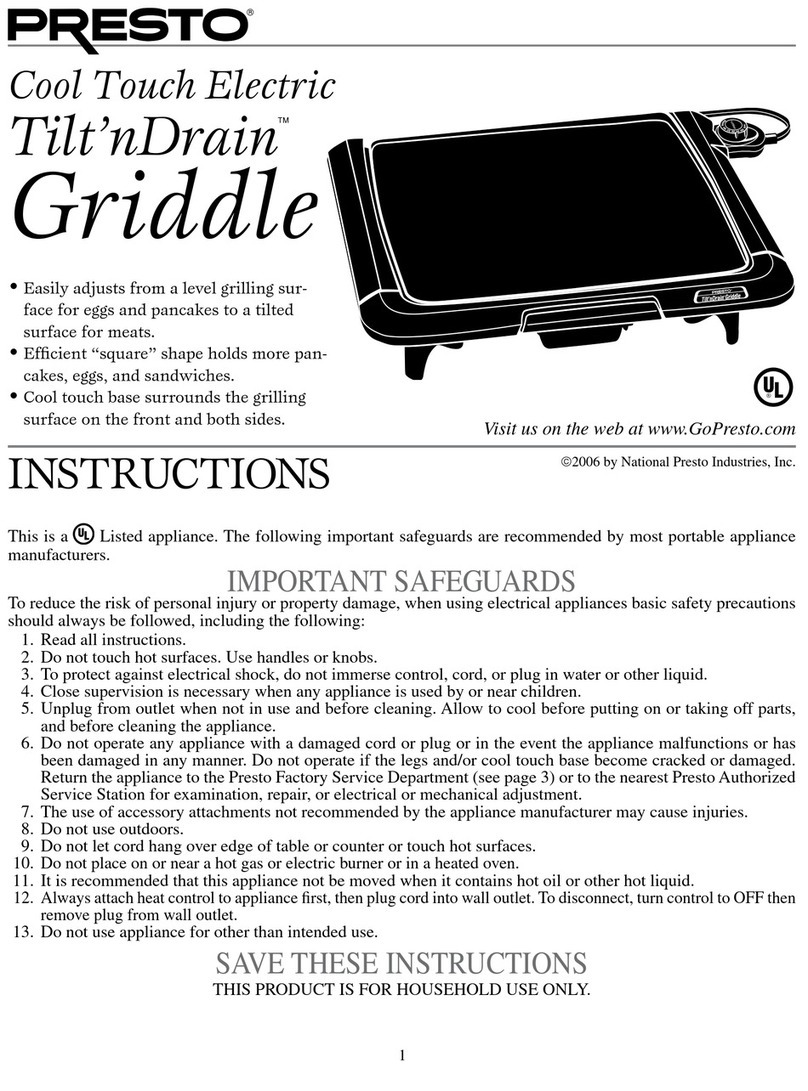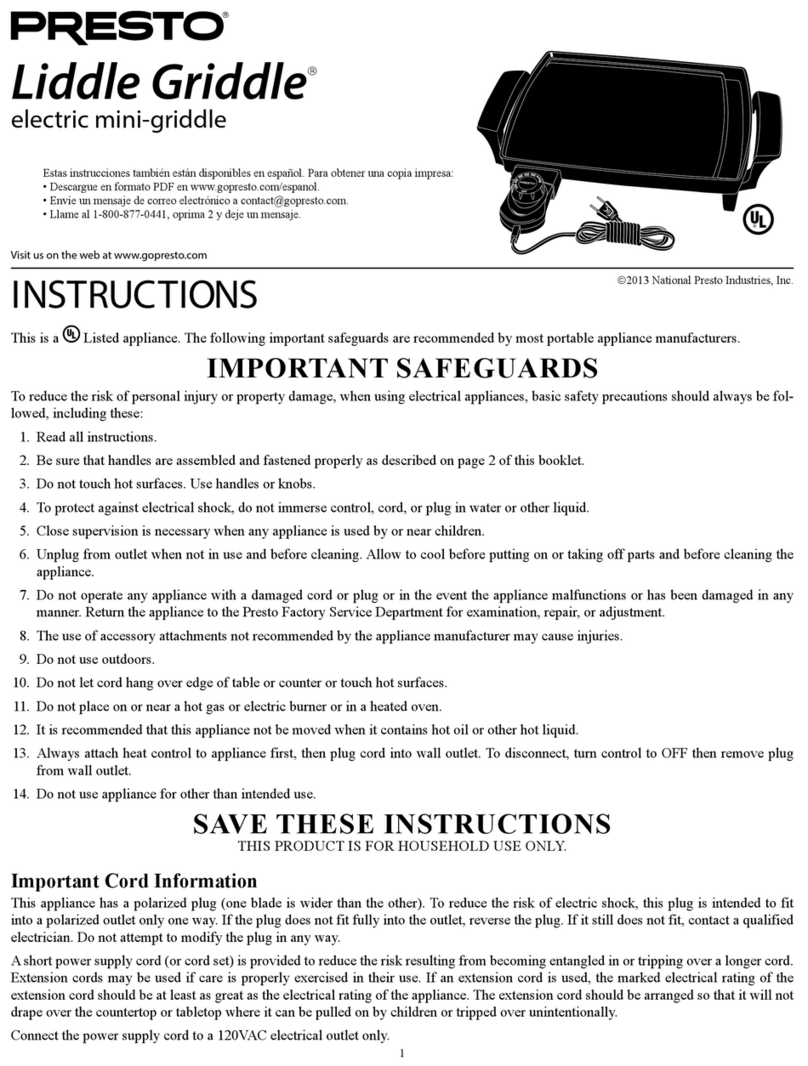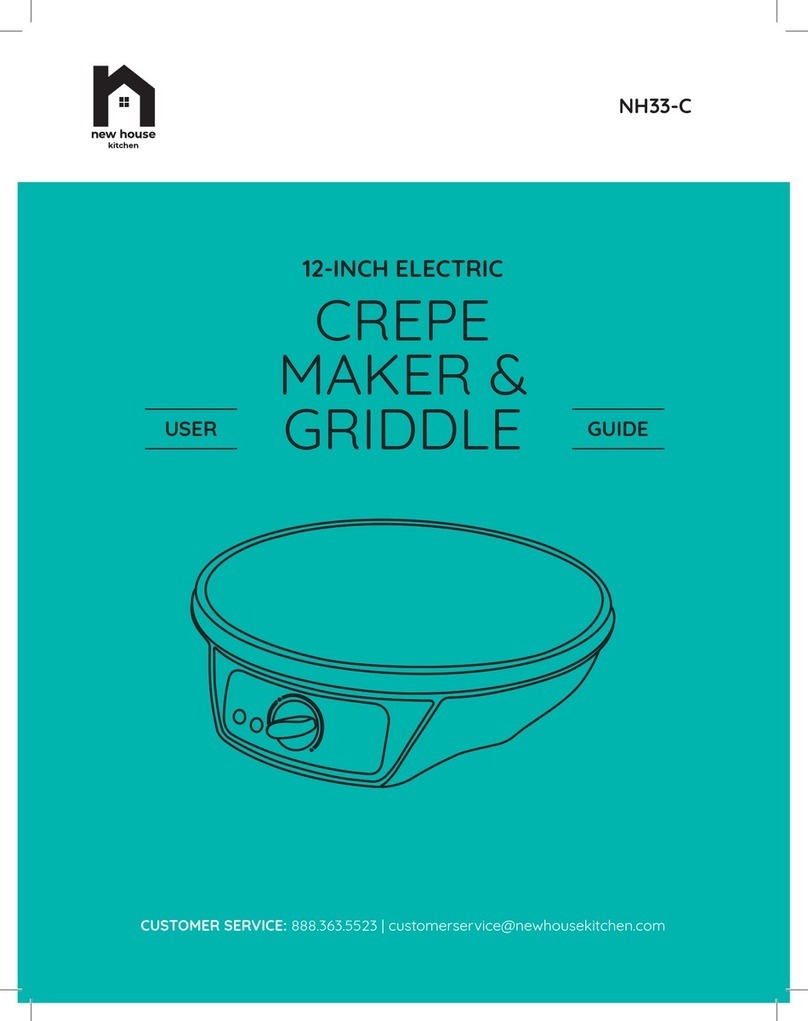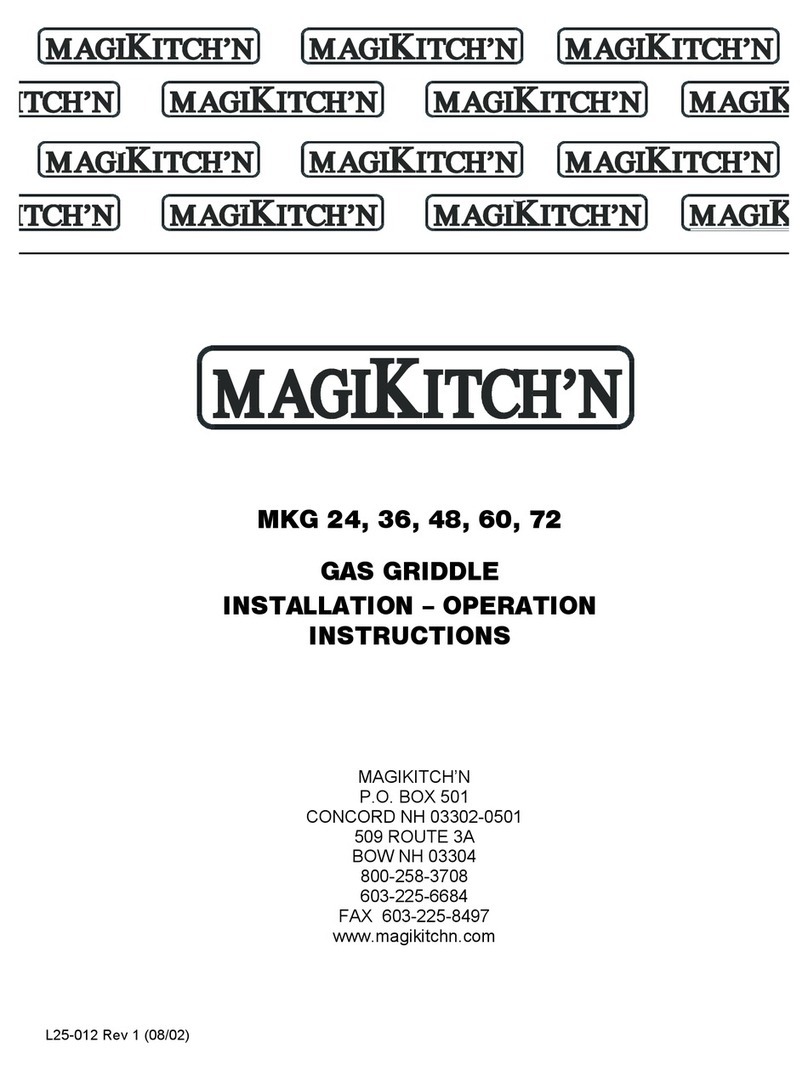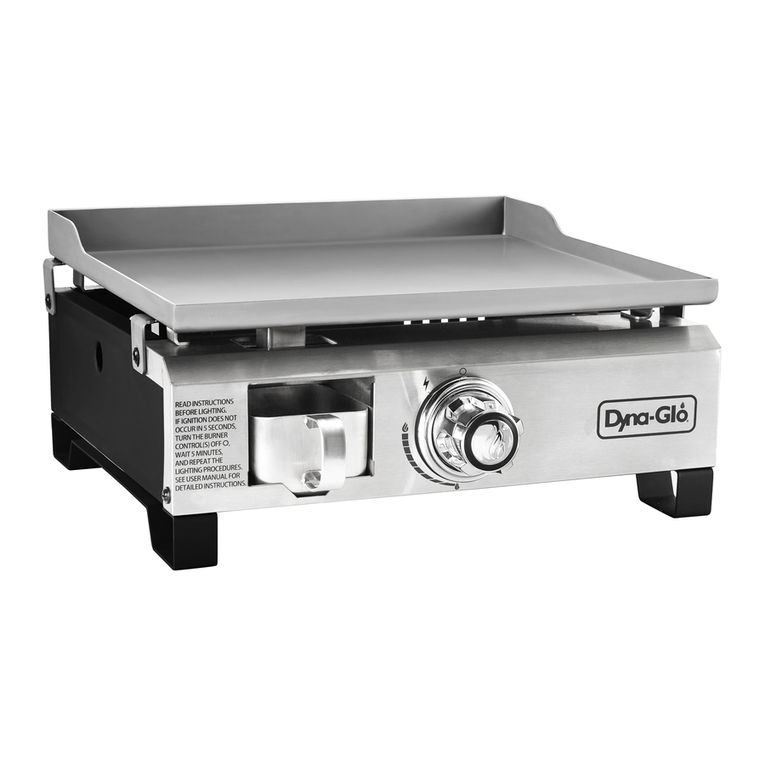
3
Care and Cleaning
Before initial use and after each subsequent use, remove the heat control and wash the griddle in warm, soapy water; rinse and dry
thoroughly. Make sure to also clean the underside as necessary. The cooking surface and handles may be cleaned with a non-metal
cleaning pad, such as Scotch-Brite* Multi-Purpose Scrub Sponge or Scotch-Brite* Dobie* Cleaning Pad. Firm pressure can be
applied. Do not use steel wool or abrasive kitchen cleaners. Do not immerse the Control Masterheat control in water or let it
come in contact with any liquid.
If necessary, the decorative trim may be cleaned with a soap-filled steel wool pad to remove baked-on grease or food particles. For
easier cleaning, fold the legs under the griddle. Do not use the soap-filled steel wool pad to clean any other griddle surface. Soaking
the griddle to loosen food residue is not necessary. If soaking is desired, do not soak for more than two hours as this may damage the
nonstick finish on the griddle.
NOTICE: To maintain the appearance of the griddle, do not wash it in the dishwasher. The decorative trim and the bottom of the
griddle will likely discolor due to the caustic nature of the dishwasher detergent. A gray residue may also form on the griddle bottom
which may transfer onto towels and/or skin.
In time, the nonstick finish may darken over the heating element due to a buildup of grease residue. This discoloration can be removed
by using a solution of one tablespoon of powdered automatic dishwasher detergent per one cup of hot water. Slide the drip tray into
place. Preheat griddle to 225°. Wearing rubber gloves, dip cleaning pad into cleaning solution and rub over the cooking surface; be
careful not to get the cleaning solution on the decorative trim. Continue cleaning until the solution is gone. Turn the griddle off and
allow to cool. Wash the griddle in warm, soapy water and dry. After treating the griddle with a commercial cleaner, it is recommended
that the cooking surface be wiped lightly with vegetable oil before using.
Periodically check the screws on the griddle frames for looseness. Retighten, if necessary, with a Phillips screwdriver.
NOTICE: Continuing to tighten, once secure, can result in stripping of screws or cracking of frames.
Important: To ensure continued accuracy of the Control Masterheat control, avoid rough handling in use and storage.
Temperature-Timetable
Food Temperature Cooking Time
Bacon 325°–350° 5–8 minutes
Bacon, Canadian 325°–350° 3–4 minutes
Eggs, fried 275°–300° 3–5 minutes
Fish 325°–375° 5–10 minutes
French toast 325°–350° 4–6 minutes
Ham, ½ inch thick 325°–350° 10–12 minutes
Ham, ¾ inch thick 325°–350° 14–16 minutes
Hamburgers, ½ inch thick 325°–375° 8–12 minutes
Minute steak 375°–400° 4–5 minutes
Pancakes 350°–400° 2–3 minutes
Pork chops, ½ inch thick 325°–375° 15–20 minutes
Pork chops, ¾ inch thick 325°–375° 20–25 minutes
Potatoes, cottage fried 300°–350° 10–12 minutes
Sausage, link 325°–350° 20–30 minutes
Sausage, precooked 325°–350° 10–12 minutes
Sandwiches, grilled 325°–350° 5–10 minutes
Steak, beef, 1 inch thick, rare 350°–400° 6–7 minutes
Steak, beef, 1 inch thick, medium 350°–400° 10–12 minutes
Steak, beef, 1½ inches thick, rare 350°–400° 8–10 minutes
Steak, beef, 1½ inches thick, medium 350°–400° 18–20 minutes
USDA Recommended Safe Minimum Internal Food Temperatures
Beef steaks 145°F
Use a meat thermometer
for complete accuracy
when measuring meat
temperatures.
Eggs 160°F
Fish 145°F
Ground beef 160°F
Pork (ground, chops, steaks) 160°F
* Scotch-Brite and Dobie are registered trademarks of 3M Company. Presto is not affiliated with this company.
